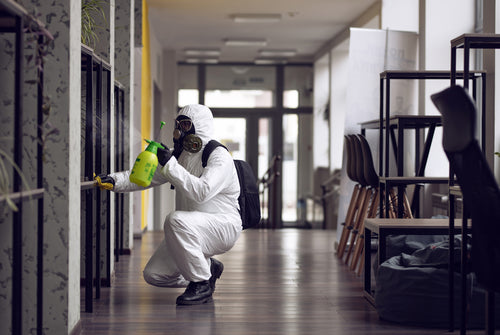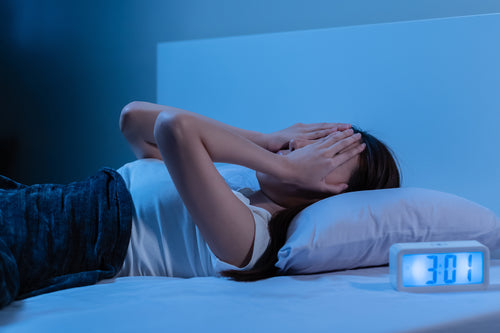From concern about the spread of infectious diseases to patient comfort, more medical providers are installing air purifiers in their office buildings. Clean air in a medical environment is a powerful way to limit the spread of viruses and bacteria. It is also a way to optimize patient care and comfort. Indoor air quality is an issue in any building. Air purifiers at the doctor are a powerful way to resolve that challenge.
Air purifiers for medical facilities are not a new concept. For decades, hospitals have used air sanitization through UV light, HEPA and other filtration systems. As technology has improved, the most sophisticated processes for filtering air have become affordable and accessible to physicians and other medical providers. Having an air purifier at the doctor’s office can encourage patient peace of mind, protect staff and contribute to wellness.
Indoor Air at the Doctor: Patient Risk
The Environmental Protection Agency (EPA) has numerous, sponsored resources that they regularly supply to medical practices. These publications cover Indoor Air Quality (IAQ) and the potential risks posed to patients who are exposed to poor IAQ in medical facilities. There are a variety of factors that contribute to unhealthy air in a doctor’s office or hospital. Some are building-related and include things like mold or dusty air ducts.
Other factors can be present, even in brand-new buildings, and are an ongoing source or discomfort and even health risk for providers and patients. Here is a list of what these are, where they could be found and the symptoms they might cause.
| Contaminant/Irritant | Possible source | Symptoms |
| Tobacco/Smoke | People’s hair or clothes | Rhinitis, cough, asthma, headache, conjunctival irritation |
| Other combustion products | Furnaces or space heaters | Dizziness, headache, confusion, nausea, eye and respiratory irritation |
| Biological pollutants | Mold, organic materials, carpet, slab on grade, pets, cockroaches/rodents | Infectious diseases, asthma, rhinitis, conjunctival inflammation, fevers, chest tightness, cough |
| Volatile Organics | Formaldehyde from sealants, paneling and furnishings | Conjunctival irritation, nose and throat discomfort, headache, allergic skin reaction, nausea, fatigue, dizziness |
| Heavy Metals | Lead paint, treated wood, art and craft materials, stained glass | Gastrointestinal discomfort, fatigue, weakness, personality changes, headache, hearing loss, abdominal pain, seizures, headache, fevers |
You can see that these airborne and surface contaminants pose a threat to the health of anyone who is exposed to them. Especially in a doctor’s office, where people may visit because they already have compromised immune systems or health issues, it is essential to have the cleanest air and surfaces possible.
Airborne Viruses and Bacteria
Anywhere people congregate, there is an increased chance of spreading disease. Medical facilities have a higher susceptibility for this. Viruses and bacteria can be transmitted through airborne particulates. When someone coughs or sneezes, a variety of pathogens in their mucus, saliva or other fluids are released into the air. These can be inhaled or come into skin contact with other people. As we know from the COVID-19 crisis, some viruses spread very quickly and have devastating impacts.
More than ever, a crucial part of patient care is addressing not only the environmental factors listed in the table above but also the pathogens in the air that can cause sickness. Air purifiers in doctor’s offices specifically address all of these issues.
- Ionic air purifiers have been tested for their effectiveness to eliminate virus strains like coronavirus, including SARS.
- Air purifiers can neutralize (ionization), trap (filtration) and deactivate (UV light) viruses and bacteria.
Air Purifier for the Doctor’s Office
High concentrations of volatile organic compounds (VOCs) and other unwanted particulates have been found in places like operating rooms, hospital wards, emergency clinics and ICUs. In one study, microbial air pollutants were found in higher concentration inside a hospital than in the outdoor air.
Due to the risk factors, air quality in healthcare facilities has long been a subject of study. Ventilation principles and other safety measures are always in force in operating rooms, for example. In an effort to improve health and safety even more, many doctor’s offices are using air purifiers to eliminate most unwanted particulates.


Air Purifier for Medical Facilities
An air purifier in a doctor’s office must perform numerous functions. To achieve cleaner air, it must effectively reduce:
- Viruses
- Bacteria
- Mold
- Allergens
- VOCs
- Particulates
- Pathogens
- Gasses
There are many ways to do this. While common filtration and cleaning may be accomplished through a HEPA air filter, carbon filter or even UV ionization, the best air purifier for a doctor’s office will employ multiple, redundant systems.
Multisystem Air Purifier for a Medical Office
To illustrate how a waiting room air purifier, exam room air purifier or pediatric office air purifier would work best, here is how the patented Air Oasis technology works. This is considered a best-in-class system that leverages NASA-researched technology to implement the most sophisticated air cleaning technology possible. The results are a reduction of unwanted particulates and neutralization of harmful materials. Combining HEPA filtration and ionization adds an optimal layer of safety and comfort.
AHPCOⓇ Technology
Advanced Hydrated Photocatalytic Oxidation is a technology originally developed by NASA. It can break pollutants down on a molecular level and sanitize surfaces, in addition to the air. This technology releases a mixture of long-lasting ions to neutralize contaminants.
Bi-PolarⓇ Ionization Technology
Ionic air purifiers can deactivate viruses and eliminate bacteria. Similar to AHPCO ionization technology, bi-polar Ionization blankets the air with ions that seek out and address mold, viruses, and bacteria. Instead of the process where these are attracted to a filter or electrostatic precipitators, our air ionizers settle onto surfaces where they are actively removed.
True HEPA and Carbon Filtration
True HEPA and carbon filters can remove 99.97% of airborne particles, smaller than a micron. This is a safe and effective way to filter out smoke, pollen, dust mites, mold and allergens. HEPA cannot remove gas. Adding a layer of carbon filtration removes VOCs, airborne chemicals, pollutants, odors and fumes.
The Air Oasis iAdaptAirⓇ is an example of how HEPA filtration and carbon filtration work together, in a multistage system, to produce optimal indoor air quality.
Germicidal UVC
Germicidal UVC uses UV light to purify the air. UV air purifiers are an important component of a multisystem air purifier for a doctor’s office. UV light deactivates the DNA of bacteria so that it can’t reproduce. Without being able to multiply, the diseases those viruses and bacteria cause are much less likely to spread.
Additional benefits of air purifiers are:
- Large coverage areas
- Portable
- Simple and effective
- Address mold issues
- Extremely quiet
- Sleek, modern design
- Smart control panel and smart phone app
Go here to read a case study of this air purifier.
Best Air Purifier for Doctor’s Offices
The best air purifier for a doctor’s office will use a system similar to the one above. This is important to eliminate anything that could produce unwanted systems or threaten the health of both providers and patients. The technology is more accessible than ever. You can now buy systems that circulate filtered air through the entire building or individual rooms.
Go here to learn more about purchasing an Air Oasis system for your medical practice, or to find one for your home.
Ready to read on? Click here to get to our expert blog on dental office air purifiers.



